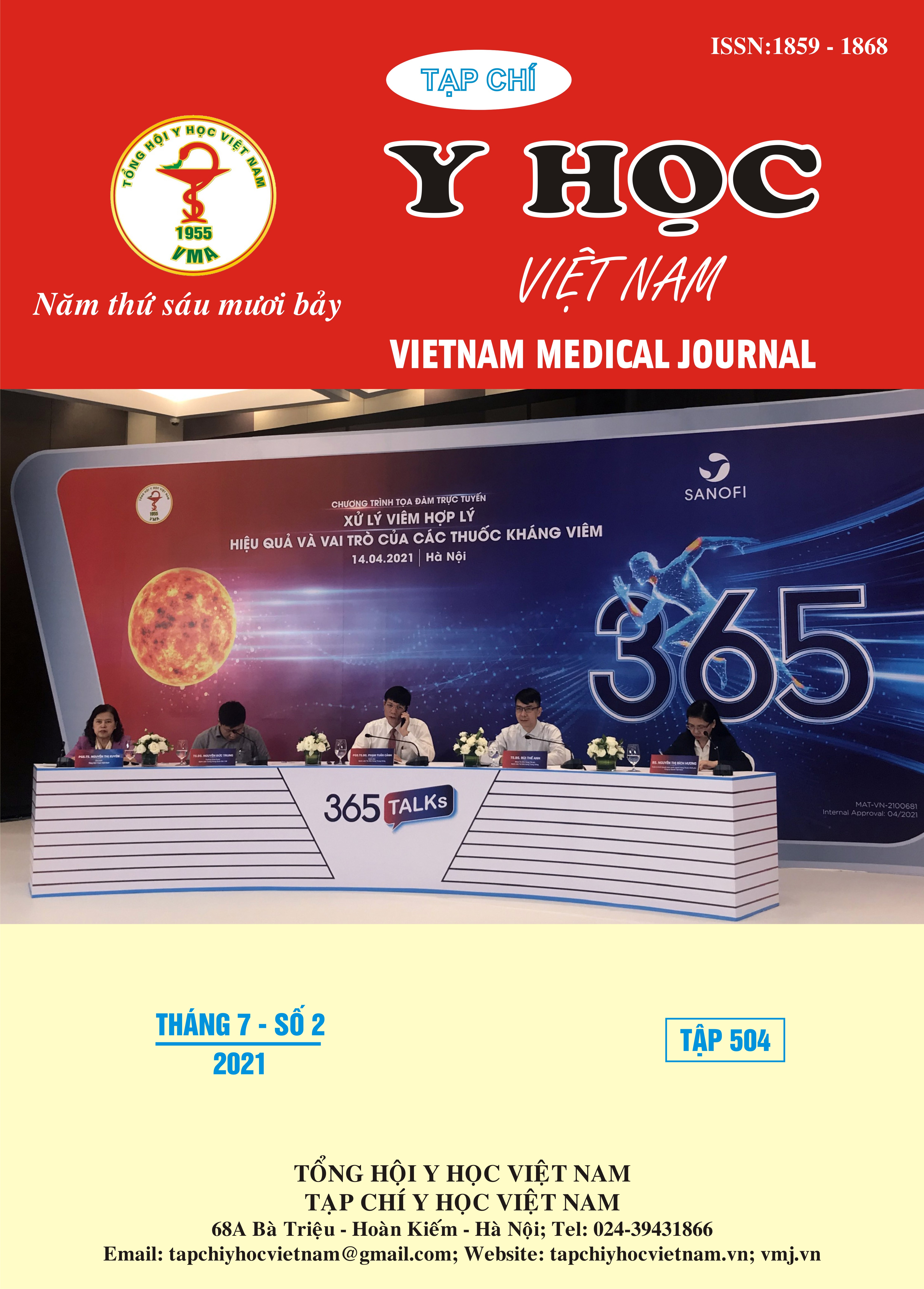RESULTS OF KIDNEY STONE TREATMENT BY UPSTREAM ENDOSCOPY WITH SOFT TUBES USING HOLMIUM LASER ENERGY AT E HOSPITAL
Main Article Content
Abstract
Objectives: To evaluate the results of kidney stone treatment by upstream endoscopy with soft tubes using holmium laser energy at E hospital. Subjects and methods: The study used a cross-sectional descriptive design combining retrospective and prospective 70 kidney stones patients with indications for treatment by retrograde endoscopic lithotripsy using flexible tubes at the Nephrology Department. - Urology, Hospital E during the period from January 2020 to May 2021. Results: 90% of patients were cleared of stones, 4.3% of patients had debris < 5mm, 2.9% of patients had debris > 5mm. 2.9% of patients still have stones. Complications encountered were postoperative fever (2.8%), pain caused by stone fragments entering the ureter (1.4%), urinary infection (1.4%). The average number of days for ureteral drainage was 22.97±6.75 days, maximum 35 days, at least 4 days. The average postoperative hospital stay was 5.2 ± 3.7 days, the shortest was 2 days, the longest was 32 days. The average hospital stay was 9.97 ± 6.02 days, the shortest was 3 days, the longest is 45 days. 90% of patients have good treatment results. 4.3% of patients had good results, and 5.7% of patients had average results. Conclusion: Kidney stone treatment by upstream endoscopy with soft tubes using holmium laser energy is a safe and effective method of treating kidney stones. This also helps surgeons and patients have more options in treatment to achieve high efficiency and reduce complications.
Article Details
Keywords
kidney stone, holmium laser, upstream endoscopy
References
2. Nguyễn Công Bình (2017), Nghiên cứu ứng dụng kỹ thuật nội soi ngược dòng với ống mềm điều trị sỏi thận tại Bệnh viện Hữu nghị Việt Tiệp Hải Phòng, y học Việt Nam. số đặc biệt (460) 385-389.
3. Phạm Ngọc Hùng, Lê Đình Khánh (2017), Nghiên cứu ứng dụng nội soi mềm niệu quản ngược dòng tán sỏi đài thận bằng Laser Holmium, Y học Việt Nam. 1(452), 8 - 11.
4. Nguyễn Văn Hiếu, Phạm Quang Vinh, Trần Văn Hinh và cộng sự, (2020), Đánh giá kết quả tán sỏi bể thận ngược dòng sử dụng năng lượng laser holmium tại Bệnh viện Quân y 103, y học Việt Nam. 2(497), 43-46.
5. Hoàng Long (2018), Hiệu quả ứng dụng nội soi ngược dòng ống mềm điều trị sỏi thận, Y học TP. Hồ Chí Minh. 4(22), 213-220.
6. Nguyễn Huy Tiến, Phạm Việt Hùng, Chu Văn Hà, (2019), Kết quả điều trị sỏi thận bằng nội soi ngược dòng với ống mềm có sử dụng C-arm tại Bệnh viện Đa khoa tỉnh Quảng Ninh, y học Việt Nam, số đặc biệt (483), 175-180.
7. Miernik A., Wilhelm K.,P. U. et al Ardelt (2012), Standardized flexible ureteroscopic technique to improve stone-free rates, Urology. 80(6), 1198-202.
8. Traxer O., Thomas A. (2013), Prospective evaluation and classification of ureteral wall injuries resulting from insertion of a ureteral access sheath during retrograde intrarenal surgery, J Urol. 189(2), 580-4.


